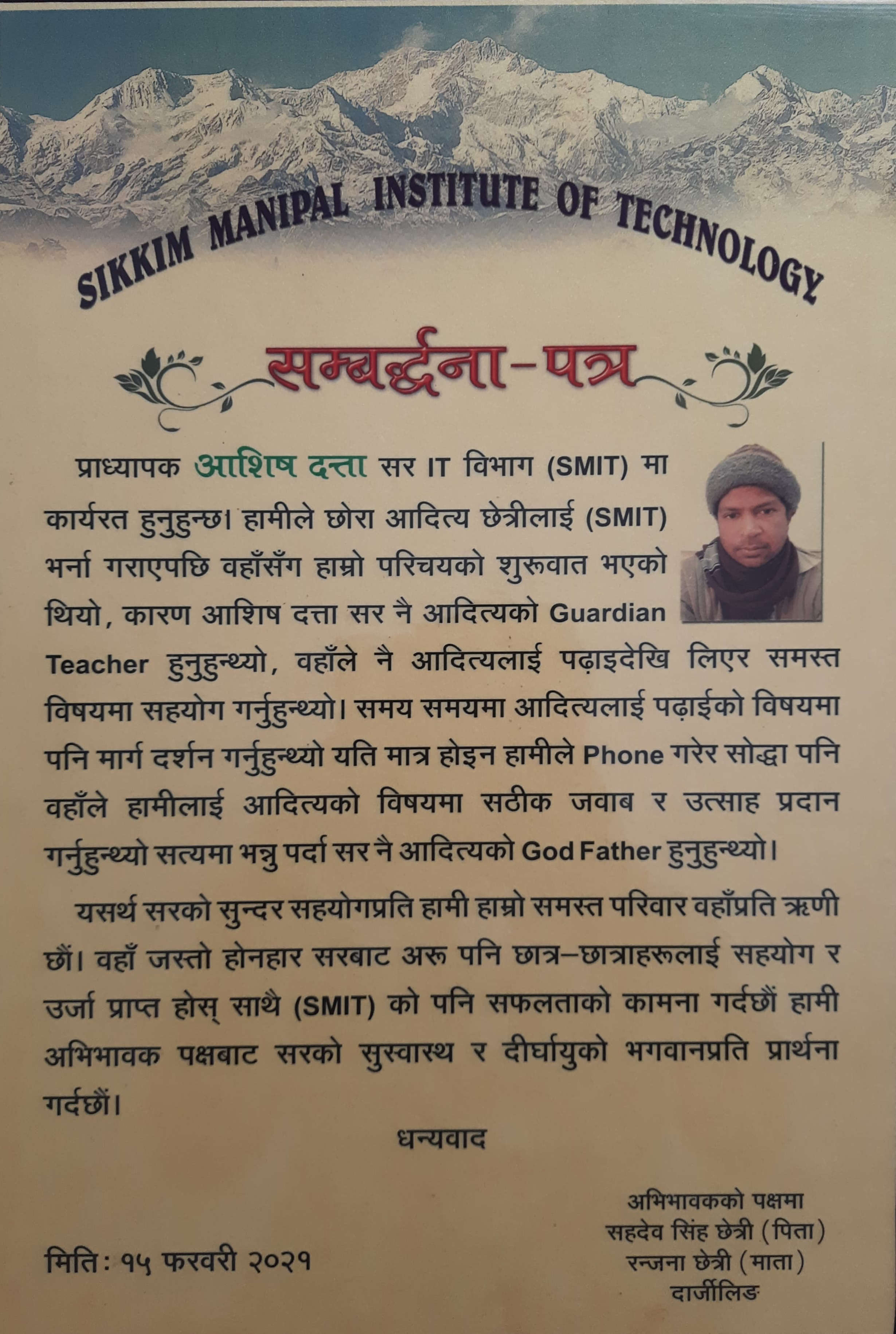 |
SMU - Best Practice |
 |
SMU - Best Practice |

1) Title of the Practice: Benevolent Fund
2) Objectives of the Practice: To provide financial support to students to continue their studies in case they lose the member to death/incapacitation, who provides financial support.
3) The context: In the year 2001, a student of 3rd year lost his father – the only earning member of the family, and consequently it appeared that he had to discontinue his studies at our technical institution-SMIT. Individual faculty members of SMIT provided him with financial support and he could complete his studies. This incident underlined the need for us to have a better mechanism in the case where a student suffers a similar fate. The benevolent fund concept was proposed in the year 2002 and accepted by the management in 2003. A similar fund is also available in SMIMS.
4) The Practice: The fund is based on transferring a part of the fee of students to the fund. Individual contributions are also allowed.
5) Evidence of Success: Help has been extended to all deserving cases.
6) Problem Encountered and Resources Required: None
| AY | No. of Students | Total Amount in Lakhs (Rs) |
| 2015 - 2016 | 12 | 11.35 |
| 2016 - 2017 | 6 | 05.82 |
| 2017 - 2018 | 5 | 04.13 |
| 2018 - 2019 | 9 | 08.60 |
| 2019 - 2020 | 11 | 09.31 |
1) Title of the Practice: Teacher Guardian Scheme
2) Objectives of the practice: To ensure personalized, emotional, academic, and other support to all the students of the Institute by faculty members.
3) The context: Students in higher education are in late adolescence and early adulthood hence generally are not provided with any personalized support in HEIs beyond the formal framework. It has been our experience, however, that students do require personalized support particularly as they come out of close parental care for the first time in their lives, many of them are yet to understand the significance of being an adult, and the responsibility and expectations it entails for them. They are emotionally vulnerable and lack the maturity to face a new world. Realizing this need of the students, a structured mechanism was felt to be introduced and a teacher-guardian scheme evolved at SMIT and has been found to be a great success. This scheme is introduced in all the constituent units.
4) The Practice: Under the scheme, each student is allotted to a specific teacher - his/her teacher guardian (TG) - who provides emotional support, monitors the academic performance, provides necessary guidance and support to his/her ward and communicates all such details regularly to the parents of the student. A teacher has 10-15 such wards under him. He fulfills the following responsibilities: Medical Attention, Emotional support, Link with his parents, Link with other teachers, Communication with his/her parents, Growth and development of ward, Counselling, etc.
5) Evidence of Success: The scheme has brought in significantly increased interactions and Inputs from students, parents, and the TGs resulting in improved academic performance by slow learners and weak students, significantly less incidents of ragging, indiscipline, and fights.
6) Problem Encountered and Resources Required: The young faculty needs to be trained to fulfil this role and some of the students are not able to build the required rapport and trust with the TG.
 |